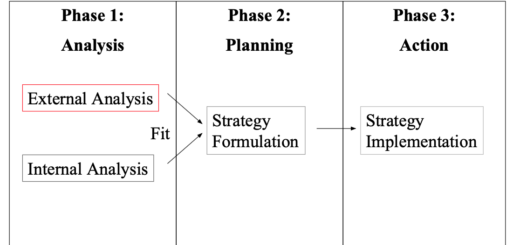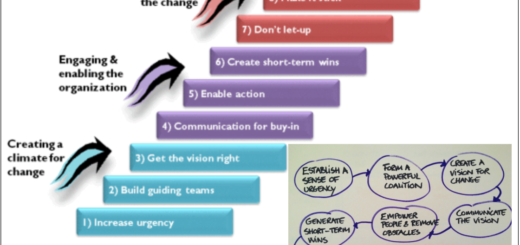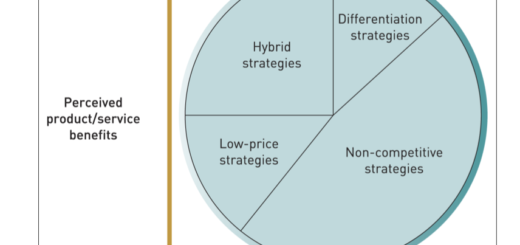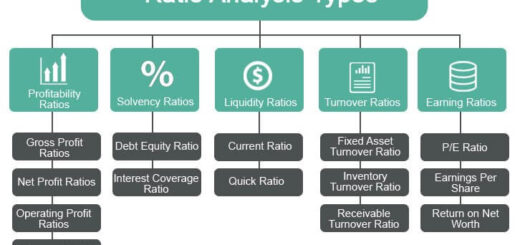SWOT Analysis
Concept:
SWOT is a conceptual framework for a systematic analysis that helps organize the external threats and opportunities with the internal weaknesses and strengths of the organization. SWOT analysis is the simplest way to conduct environmental scanning.
A SWOT analysis should result in the identification of an organization’s core competencies, and opportunities that the company is unable to take advantage of due to a lack of, or insufficient, current resources.
- Strengths: These are internal factors that give an organization an advantage over its competitors. Strengths could include a strong brand, a talented workforce, efficient operations, or a unique product or service.
- Weaknesses: These are internal factors that put an organization at a disadvantage compared to its competitors. Weaknesses could include a lack of resources, poor management, outdated technology, or limited brand recognition.
- Opportunities: These are external factors that could potentially benefit an organization. Opportunities could include market trends, changing consumer preferences, new technologies, or emerging markets.
- Threats: These are external factors that could potentially harm an organization. Threats could include economic downturns, new regulations, intense competition, or disruptive technologies.
To perform a SWOT analysis, an organization typically conducts a brainstorming session with key stakeholders and analyzes each of these factors in detail. By identifying its strengths and weaknesses, an organization can identify areas for improvement and focus on leveraging its strengths. By identifying opportunities and threats, an organization can develop strategies to take advantage of opportunities and mitigate potential risks. A SWOT analysis can help an organization to develop a more effective strategic plan and make informed decisions about the future.
Uses of SWOT:
SWOT analysis can be used in a variety of contexts to help organizations make strategic decisions. Here are some of the most common uses of SWOT analysis:
- Strategic Planning: SWOT analysis can help organizations identify their strengths, weaknesses, opportunities, and threats, and use that information to develop a strategic plan for the future.
- Marketing: SWOT analysis can be used to evaluate a company’s marketing strategy, identify areas for improvement, and develop new marketing initiatives.
- Product Development: SWOT analysis can help organizations identify opportunities for new products or services, assess the potential risks and challenges, and develop a plan for successful product development.
- Risk Management: SWOT analysis can be used to identify potential risks to an organization, assess the likelihood and potential impact of those risks, and develop strategies to mitigate those risks.
- Competitive Analysis: SWOT analysis can be used to evaluate a company’s competitors, identify their strengths and weaknesses, and develop strategies to gain a competitive advantage.
- Financial Analysis: SWOT analysis can help organizations identify financial risks and opportunities, evaluate the potential impact of changes in the market or economic conditions, and develop strategies to improve financial performance.
Overall, SWOT analysis is a versatile tool that can be used in a wide range of situations to help organizations make better-informed strategic decisions.
Real-World Example of SWOT Analysis: Xiaomi
Strengths:
- Strong brand recognition and reputation in the Chinese and Indian markets.
- Wide range of high-quality products at affordable prices, including smartphones, smartwatches, and smart home devices.
- Extensive global distribution network, including partnerships with major telecom carriers and retail chains.
- Ability to adapt quickly to changing market trends and consumer preferences.
- Focus on innovation, with a strong R&D team and investment in new technologies like 5G and AI.
Weaknesses:
- Limited brand awareness and market share outside of China and India.
- Lack of a strong presence in the high-end smartphone market.
- Limited product diversification beyond electronics.
- Dependence on contract manufacturing, which can lead to supply chain disruptions and quality control issues.
- Reliance on online sales channels, which can limit potential customer base and brand exposure.
Opportunities:
- Expanding into new markets, particularly in Southeast Asia, Europe, and Latin America.
- Developing and launching new product lines, such as laptops and other consumer electronics.
- Increasing investment in marketing and branding to improve global visibility.
- Capitalizing on the growing demand for smart home devices and the internet of things (IoT).
- Leveraging partnerships with telecom carriers to offer bundled services and exclusive promotions.
Threats:
- Intense competition from established players like Apple and Samsung, as well as emerging brands like Oppo and Vivo.
- Potential for increased regulatory scrutiny in markets like the US, Europe, and India.
- Economic instability or geopolitical tensions that could disrupt global supply chains and distribution networks.
- Dependence on key suppliers and partners, which could be subject to geopolitical or economic pressure.
- Rapidly evolving technological landscape, which could make existing products and business models obsolete.







I’m extremely inspired with your writing talents as smartly as with the layout to your blog. Is this a paid topic or did you modify it your self? Either way keep up the excellent quality writing, it is rare to peer a nice blog like this one these days. !